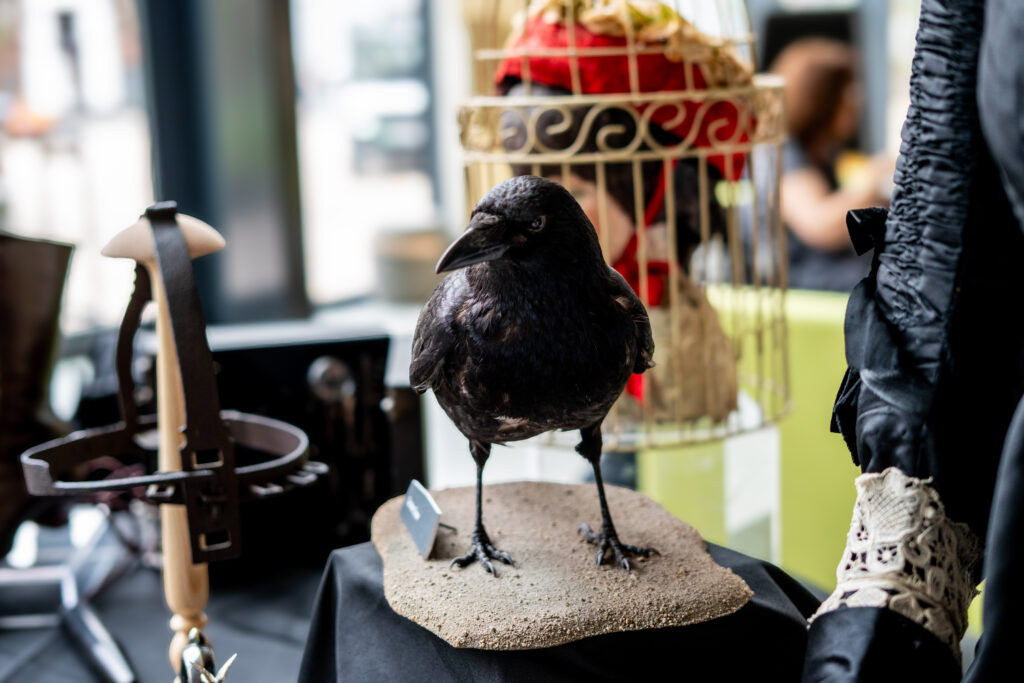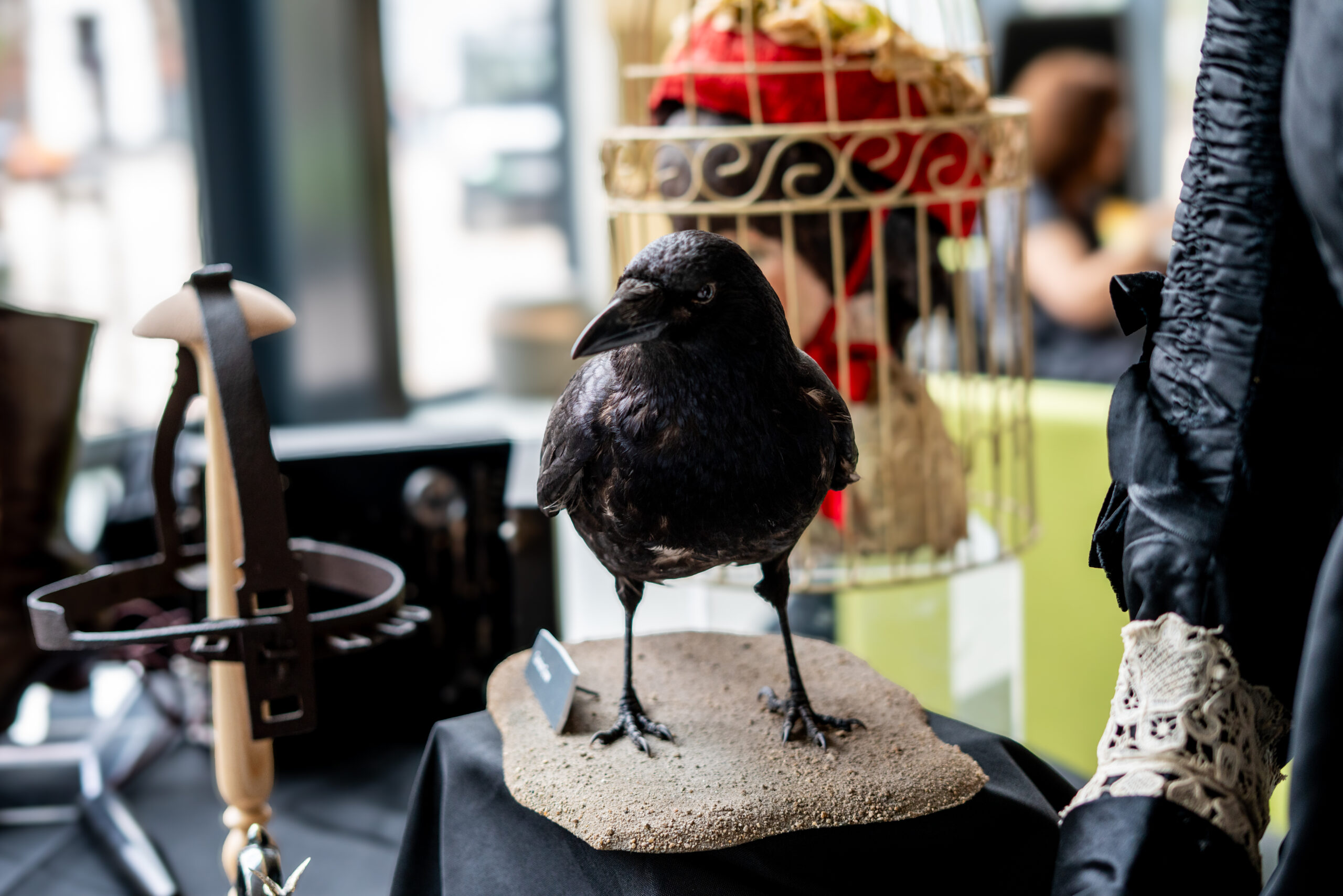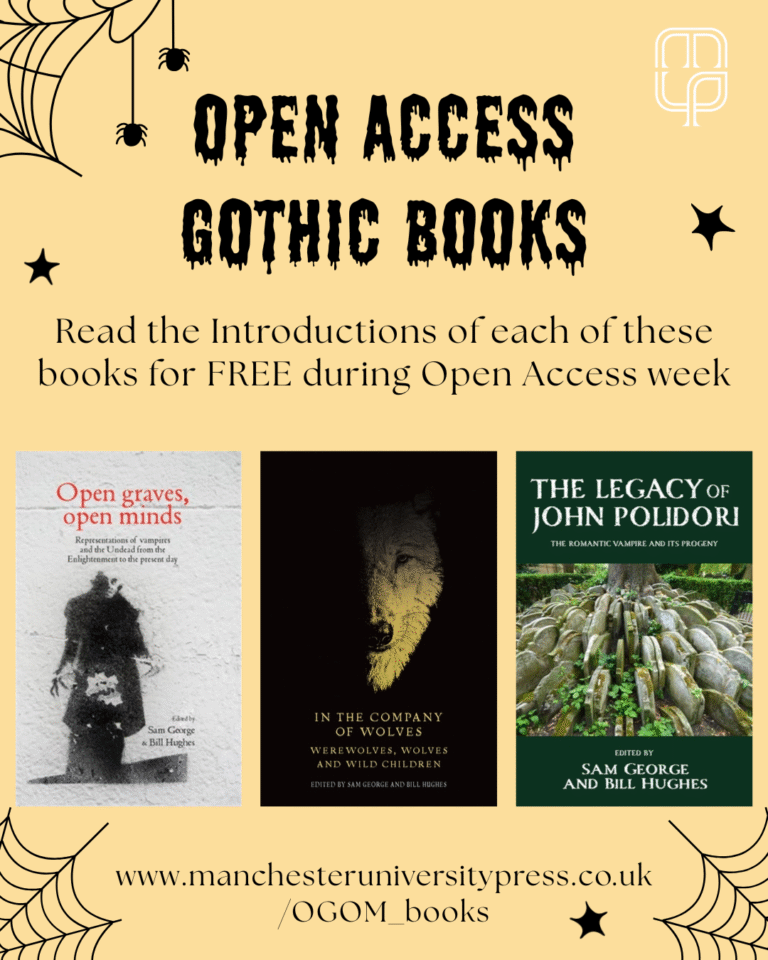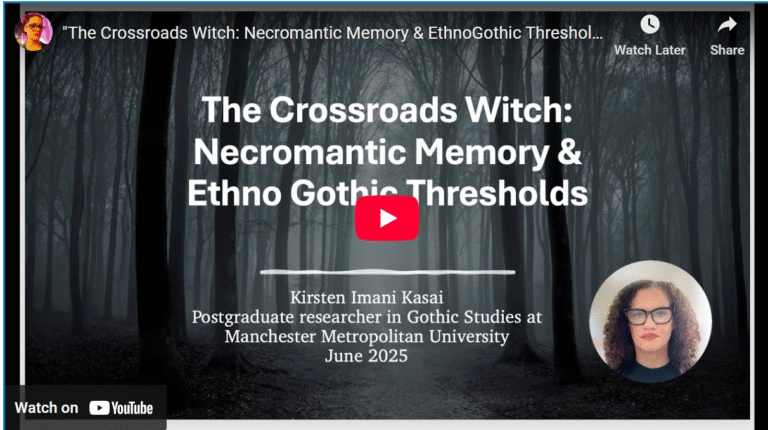Words by Emma Liggins, photographs by Farheen Fatima.
Heritage fairs bring together objects, collections and curators in a shared accessible space. I’d really enjoyed taking part in a fair at Gladstone’s Library in Wales as part of the British Association of Victorian Studies annual conference in 2024; in collaboration with Special Collections Museum curator Steph Boydell from Manchester Met, I helped with a pop-up exhibition of Victorian memorial cards and art catalogues. Browsing the other stalls from libraries, museums, galleries and archives was a great way to find out more about regional heritage collections and different curatorial practices.
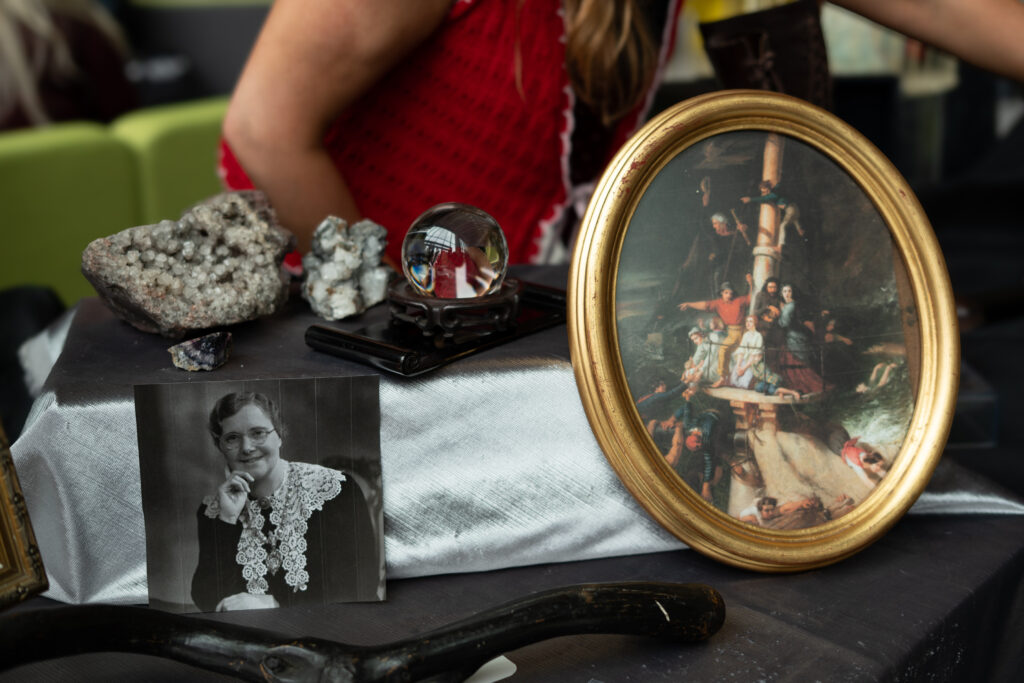
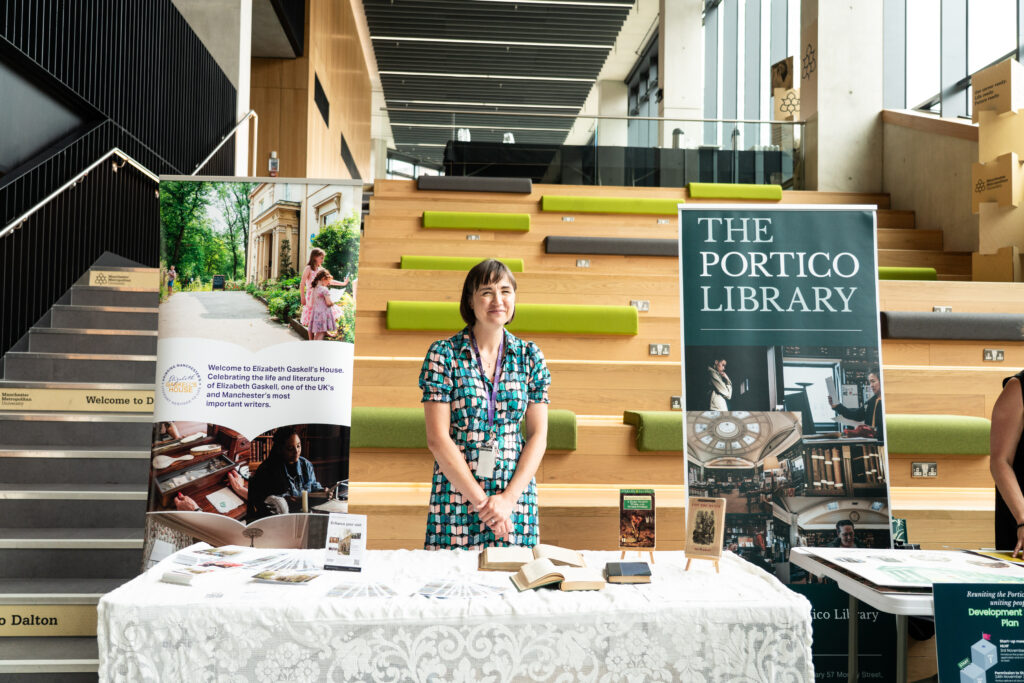
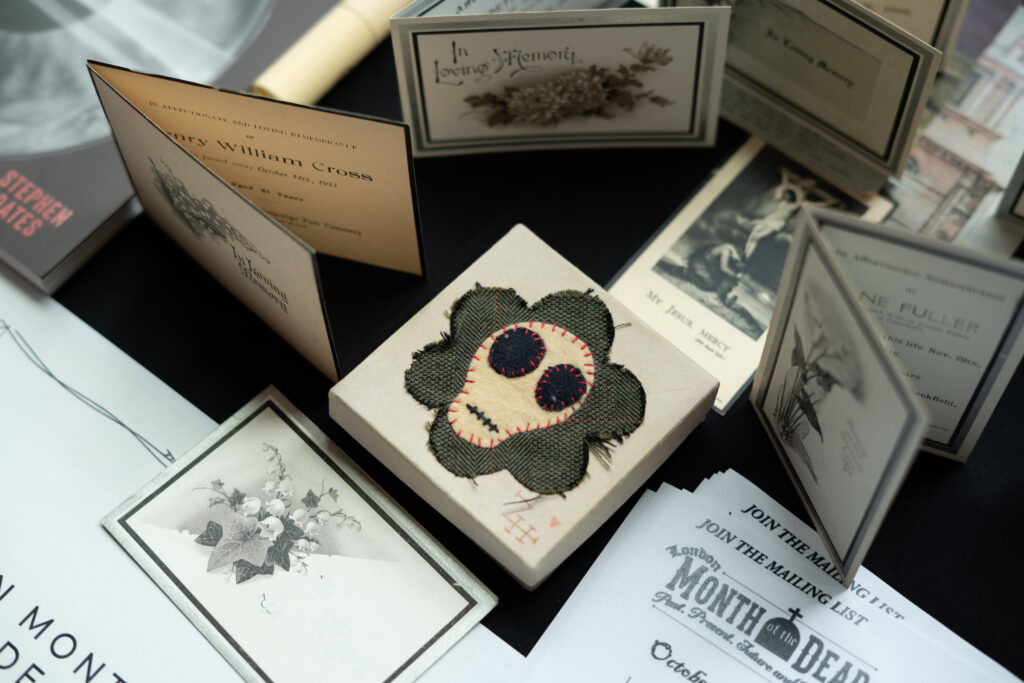
On Wednesday 25 June the Centre hosted a Gothic and Heritage fair on campus. We’re grateful for faculty funding from AHEAD, the Arts and Humanities Engagement and Dialogue public engagement programme at Manchester Met, who also paid for our fabulous student intern photographer Farheen Fatima (currently on the MA Photography programme). This fair was on the first day of our Gothic Crossroads conference, an international event exploring and celebrating the multi and interdisciplinary crossings of Gothic and Horror studies. With the help of our Events and Communications interns Ellie Croot and Jia Madlani, we created slides to publicise upcoming events and the ethos of each heritage organisation who attended, plus an online survey to capture responses. Our research interests in museums, ruins, ghost tours and haunted heritage in the Gothic Centre meant that we’d excitedly scheduled conference panels on fashion, architecture, memorialisation and dark tourism (including work on Lancashire corpse paths from Hannah Singleton in the School of Art). A Gothic and Heritage fair which asked organisations to foreground the darker aspects of their collections and enterprises seemed the perfect way to kick off our event and to further explore the crossings between the Gothic and heritage.
Curators, events managers, volunteers and student interns gathered to talk about the ways in which their organisations drew on the narratives of Gothic, haunting, folklore, witchcraft, science, burial and horror film to engage the public. This included stalls from libraries with rich nineteenth-century collections, such as the Portico Library in Manchester and Gladstone’s Library in Wales, who displayed copies of early editions of Gothic and vampire novels with their striking illustrations. Elizabeth Gaskell’s House showcased various editions of ghost stories by the popular Manchester novelist, connecting with ongoing debates about women writers of the ghost story addressed in the conference.
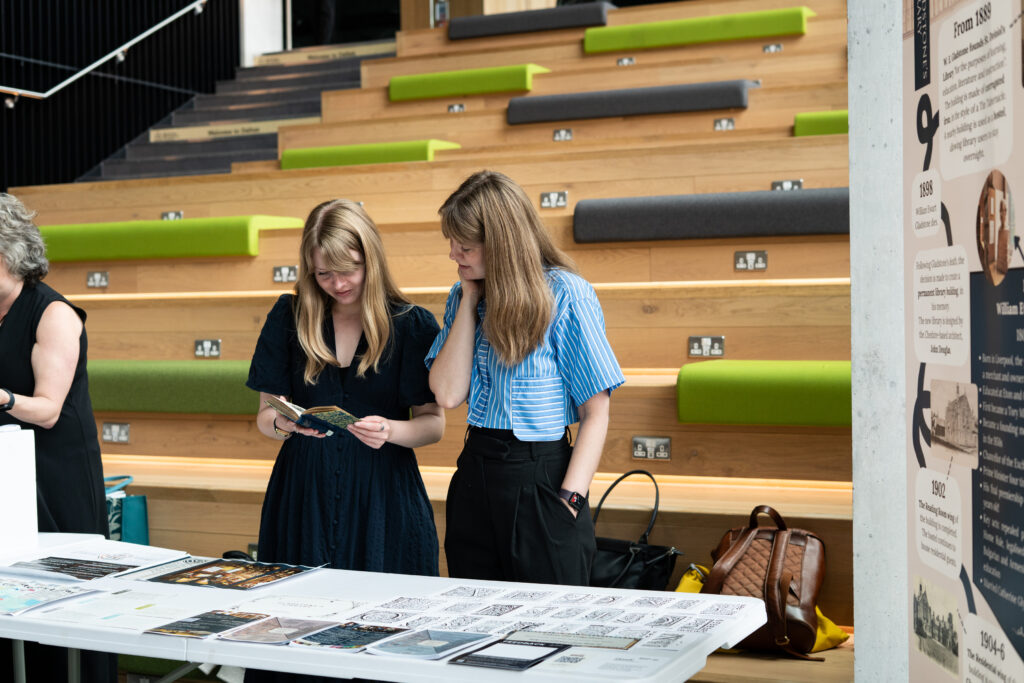

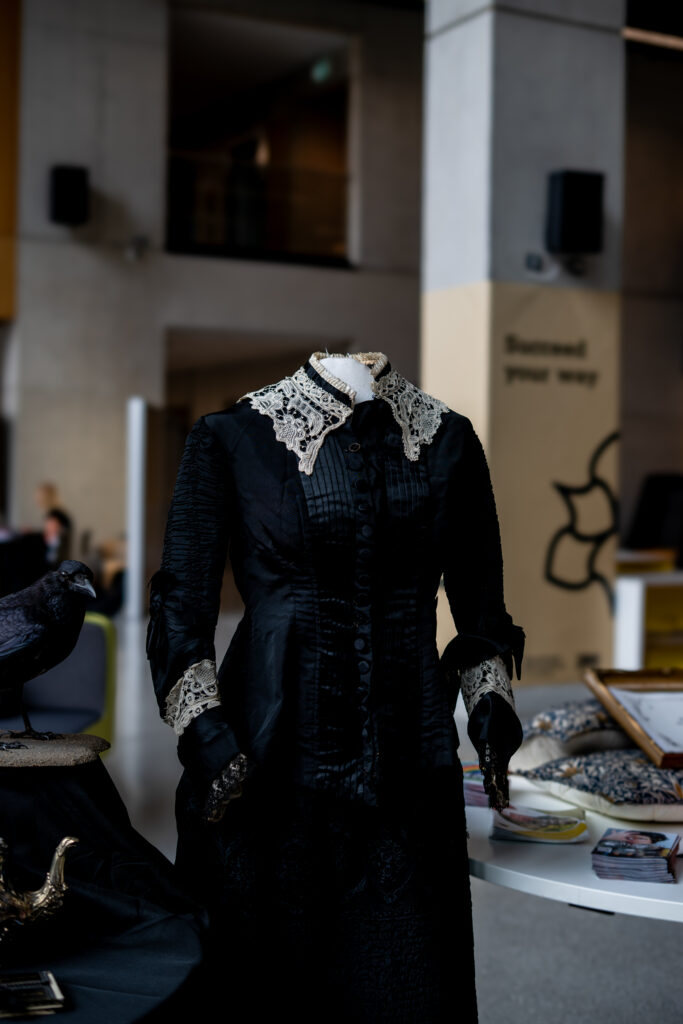
The London Month of the Dead, a festival of death and the arts which works in collaboration with the Magnificent Seven Victorian cemeteries in London, promoted its October 2025 listings, comprising death-themed talks on everything from body-snatching and burial to funeral customs as well as guided cemetery tours and taxidermy workshops. Hoghton Tower, a Tudor manor house near Preston which inspired one of Charles Dickens’ last stories after a visit to its ruined buildings, advertised its Frightful Folklore tours and family-friendly spooky events for children, including the School of Witchcraft and Wizardry. The North West Film Archive and Special Collections Museum, both part of our library provision at Manchester Met, brought along objects from their collections which showed an alternative side to print culture and film. Memorial cards and Vinegar Valentines from the Laura Seddon collection of greeting cards in Special Collections sat alongside old film reels, vintage cameras and screenings of early twentieth-century horror film and TV footage.
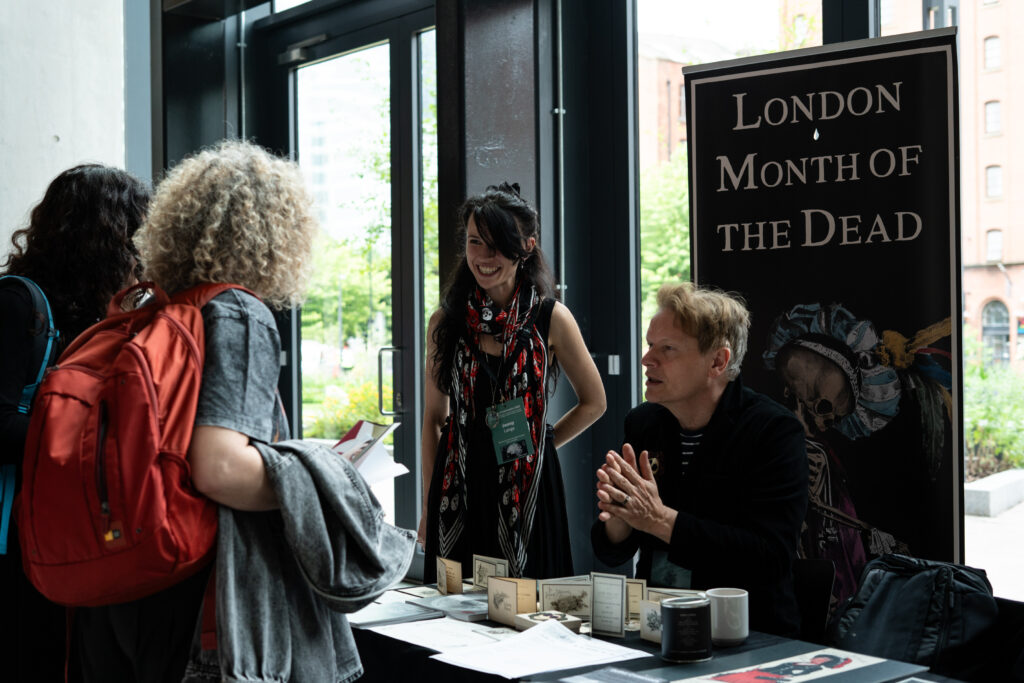
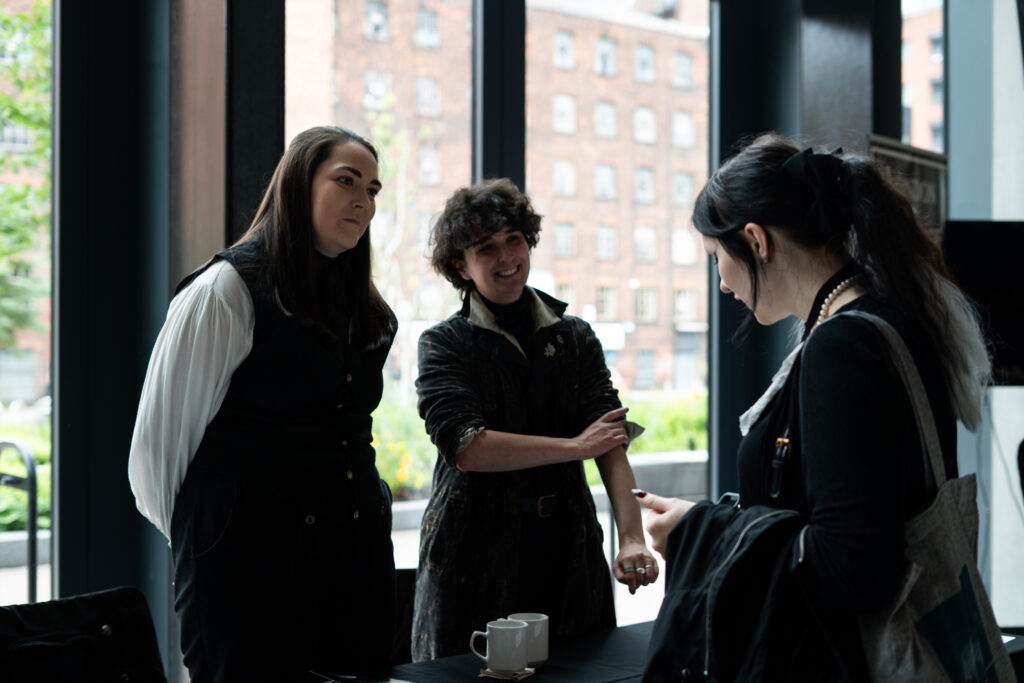
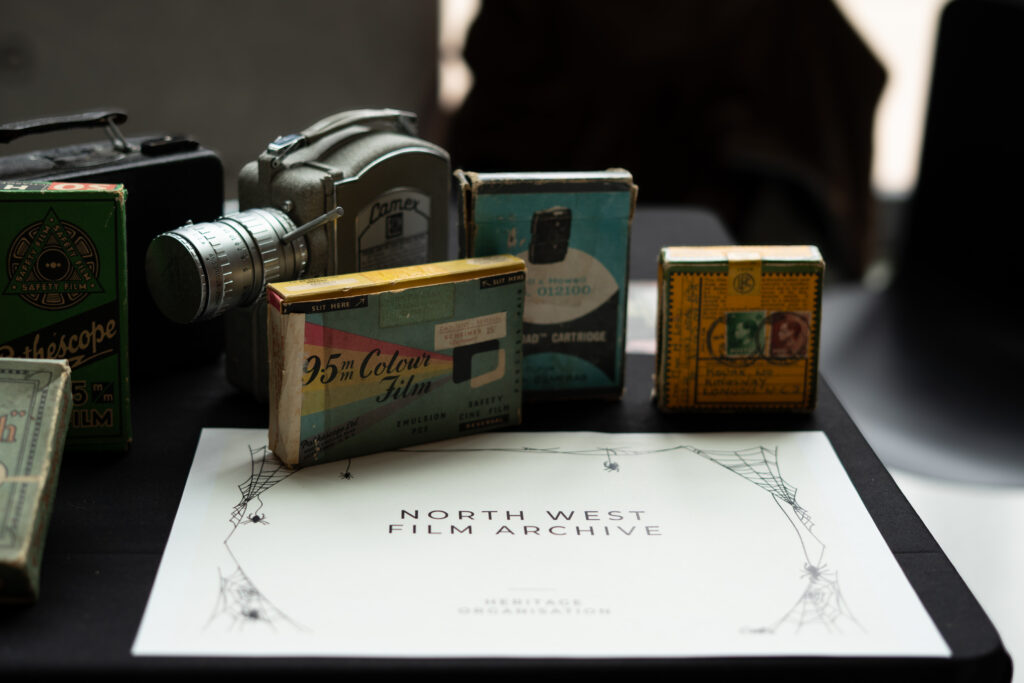
The Whitaker Museum and Gallery from Rossendale, Lancashire, stole the show with their eclectic display of objects: a stuffed bird, mounted butterflies, an eerie dummy in a black mourning dress, strange annuals. As a prize-winning forward-thinking organisation, the Whitaker is famous for its theatrical Cabinet of Curiosities; some of these curiosities, including a caged head and a drinking vessel with a frog inside, helped to transform the Dalton atrium into a rather uncanny space.
With their displays of Gothic novels, old film reels, Victorian greeting cards, mourning dress, taxidermy, weird ornaments and decorative jewellery, the heritage stalls told a story of the interweaving of Gothic aesthetics and motifs with the fabric of the past. New directions for heritage and the enduring popularity of Gothic narratives were apparent in advertised events, exhibitions and innovations from the Frightful Folklore tours at Hoghton Tower to the renovations at the Portico Library which will restore the former ground-floor reading room space from its early nineteenth-century days.
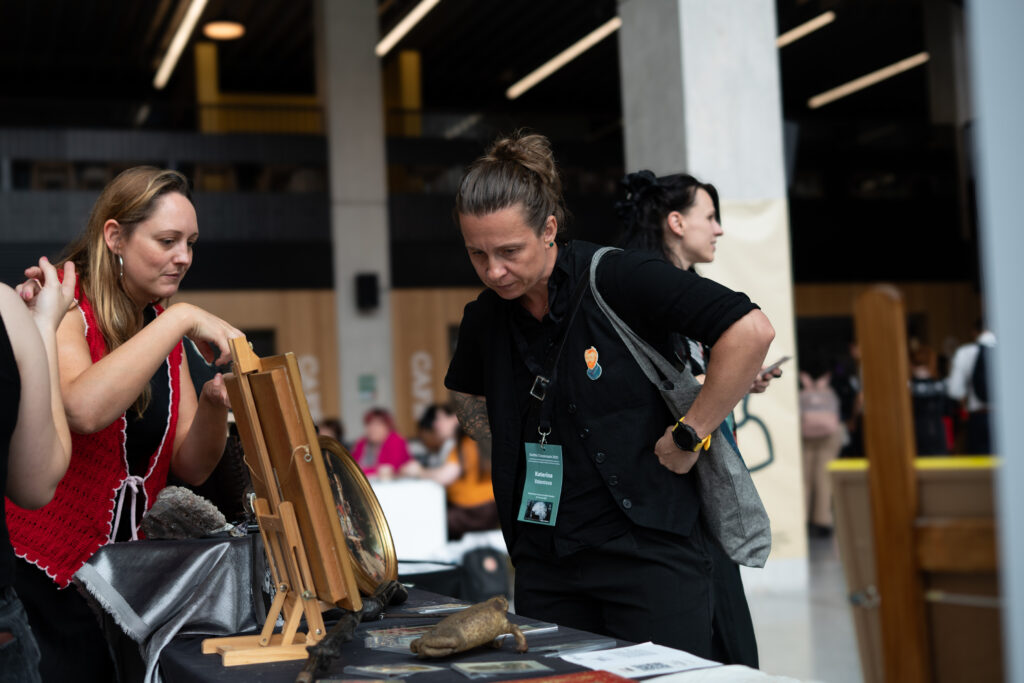
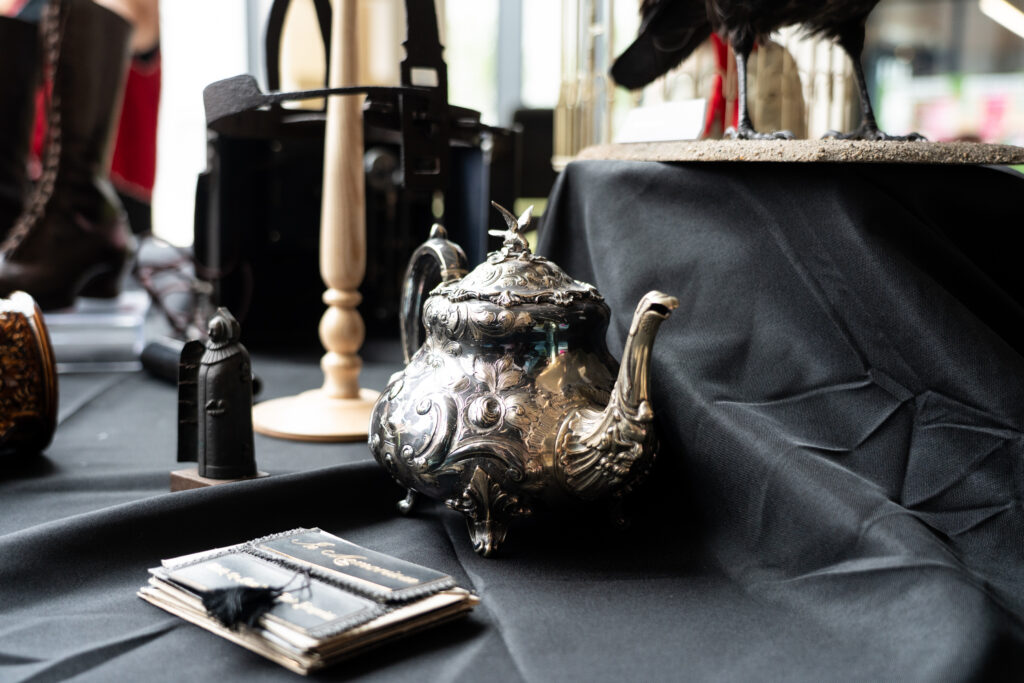
How does Gothic intervene in the heritage sector?
“The gothic loves history, story-telling and nostalgia. All of which are essential to heritage“.
“The Gothic explores the human fascination with morbidity and helps to understand past fascination with funeral art, taxidermy, horror, etc. giving perspective on what otherwise might be perceived as simply weird or pointless“.
The significance of the Gothic to the heritage sector in the UK was one of the key questions asked in our survey about the fair. Although most of the audience were already Gothic fans, there were some revealing responses. Participants wrote that they’d enjoyed talking to the expert staff and that the fair ‘encouraged engagement with new places’. They liked ‘hearing stories about cool artefacts’ and seeing the wide variety of ‘beautifully displayed’ exhibits. It was appreciated that what was on display ‘wasn’t just “one type” of Gothic’. Most agreed that the gothic can enrich the experience of heritage, because it ‘reaches an audience segment who are keen to look below the surface of life’, encourages research and reinterpretation of gothic items in collections and prompts ways of interrogating ‘the contemporary relationship with the past’ or ‘the uncanniness of old ways of living’.
So did the fair change the way the audience thought about heritage in the UK? Or inspire further visits? Some mentioned the diversity of collections and ‘more freedom and more fun’ associated with little museums. Experiencing the fair suggested to one participant that heritage ‘is not only colonially driven’, and that not every country has ‘so many small organisations taking care of heritage’. Most of those surveyed agreed that they would go on to visit at least one of the places or attend one of the events advertised, though some found the costs prohibitive. Conversations with curators had inspired reflections on broader debates about how the heritage industry has been tarnished by colonial connections, on exclusionary costs and changing heritage offers to cater to different audiences.
I’ll finish with this remark on the enduring appeal of the Gothic:
‘I didn’t realise that Gothic events were so popular outside of academia!’
